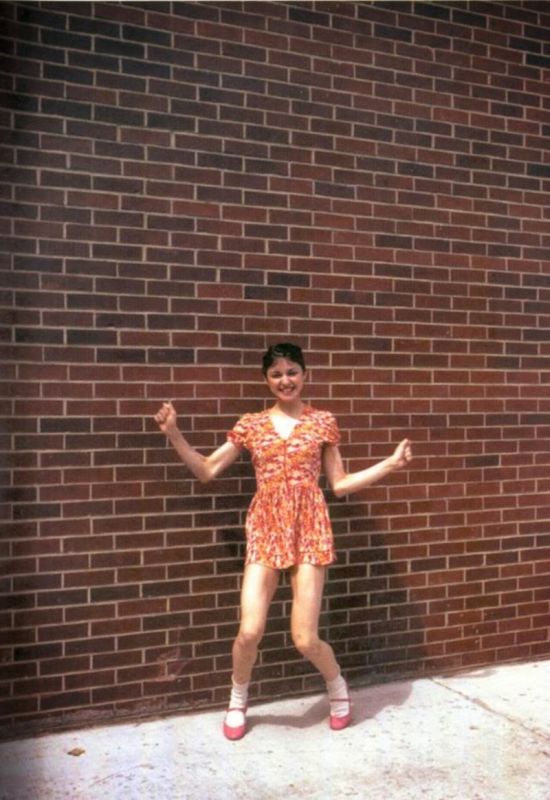|
|
Madonna Louise Ciccone
|
On her 1983 debut album, Madonna's vocal abilities and personal artistry were not fully formed. Her vocal style and lyrics was similar to other pop stars that period like Paula Abdul, Debbie Gibson and Taylor Dayne. The songs on Madonna reveal several key trends that have continued to define her success, including a strong dance-based idiom, catchy hooks, highly polished arrangements and Madonna's own vocal style. In songs such as "Lucky Star" and "Borderline", Madonna introduced a style upbeat dance music that would prove particularly appealing to gay audiences. The bright, girlish vocal timbre the early years became passé in Madonna's later works, the change being deliberate, since Madonna was constantly reminded how the critics had once labelled her as "Minnie Mouse on helium", because her early voice. Her second album, Like a Virgin (1984), foreshadowed several trends in Madonna's later works. It contained references to classical works (pizzicato synthesizer line that opens "Angel"); potential negative reaction from social groups ("Dress You Up" was blacklisted by the Parents Music Resource Center); and retro styles ("Shoo-Bee-Doo", Madonna's homage to Motown). Madonna's early style, and the change that she ushered in it, is best evident in the song "Material Girl". It opens with Madonna using a little-girl voice, but following the first verse, she switches to a richer, more mature voice in the chorus. This mature artistic statement was visible in True Blue (1986). The song "Papa Don't Preach" was a significant milestone in her artistic career. The classical introduction, fast tempo and the gravity in her voice was unprecedented in Madonna's œuvre at that time.
With Like a Prayer (1989), Madonna again entered a new phase, musically. The album introduced live recorded songs and incorporated different genres music, including dance, R&B and gospel music. Madonna continued to compose ballads and uptempo dance songs for Erotica (1992) and Bedtime Stories (1994). She tried to remain contemporary by incorporating samples, drum loops and hip hop into her music. Her voice grew much deeper and fuller, evident in the tracks like "Rain" and "Take a Bow". During the filming Evita, Madonna had to take vocal lessons, which increased her range further. Of this experience she commented, "I studied with a vocal coach for Evita and I realized there was a whole piece my voice I wasn't using. Before, I just believed I had a really limited range and was going to make the most it." Continuing her musical evolution with Ray Light, the track "Frozen" displayed her fully formed vocal prowess and her allusions to classical music. Her vocals were restrained and she sang the songs in Ray Light without vibrato. However, the intake breath within the songs became more prominent. With the new millennium came her album Music in which Madonna sang in her normal voice in a medium range, and sometimes in a higher register for the chorus. Fouz-Hernández commented that "Throughout her career, Madonna's manipulation her voice shows us that, by refusing to be defined in one way, she has in fact opened up a space for new kinds musical analysis."
|
|









